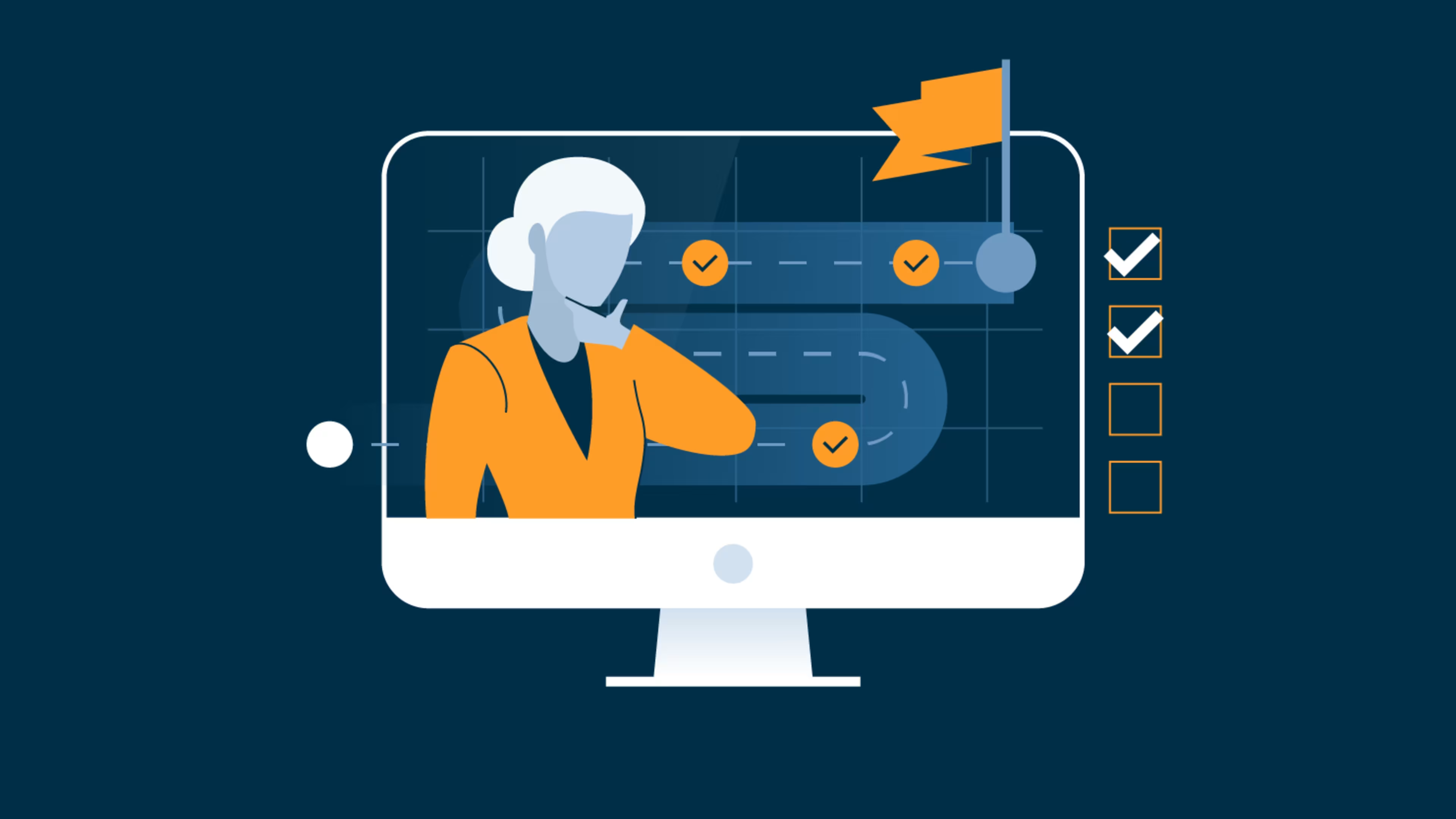Understanding project flow from start to finish allows you to set achievable goals.
You’re a project manager who was just handed a high-profile project with a new client. It has a tight deadline, and you need everyone on the team at the top of their game.
What does your project management lifecycle look like? A project management lifecycle creates a step-by-step plan with the best practices to move a project from start to finish. A project manager follows the same structured template for each project, making tweaks as they find ways to improve. It provides a structured way to create, execute, and finish a project.
The beauty of a PM lifecycle is that it's scalable and repeatable across teams and projects.
Once you establish your basic project management process, your teams get better at completing client-facing and internal tasks. Take a look at the seven stages of the project management lifecycle to achieve optimal results regardless of your industry.
1. Planning
Also called initiating, the planning stage is the most important part of the project management lifecycle. As Dwight D. Eisenhower said, "Plans are useless, but planning is indispensable." Planning means you prepare for possible contingencies and leave some wiggle room for unexpected developments.
You can subdivide planning into four main activities:
Determine why you're moving forward with the project. Build a case for it, determine the problem you're trying to solve, and devise a roadmap to fix it.
Create a rough outline of what the project involves. The basic outline should include an estimate of the scope, time, and resources needed for your project.
Get all stakeholders involved, since they bring valuable insights to the project. Stakeholders include staff members, independent contractors, customers, suppliers, government agencies, communities, and nonprofits.
Develop a project hierarchy. The hierarchy typically includes the project manager as the lead, department managers as the next point on the chain, followed by department subordinates. Larger companies may have more complex hierarchies, so go with what works best with your business structure.
Once you have planning in place, dive deeper into what it will take to move the project along.
2. Analysis
Once you've sketched out a solid plan for your project, the next phase of project management involves a deeper analysis of data from stakeholders and experts. This will show whether you can move forward.
Conduct feasibility studies
Feasibility studies let your team determine if the project's goals are achievable. All stakeholders evaluate the pros and cons of the project and whether you have enough resources, including technological tools, data, and team expertise.
Summarize your findings
Once your feasibility studies are complete, summarize your findings to the stakeholders. An executive summary (one to two pages) should suffice. If people need more information, you can provide the details of your analysis.
Seek approval from decision makers
Now your project moves into the hands of those who can approve the summary because, after this point, the investment in a project becomes more pronounced.
3. Design and analysis
In the planning stage, you came up with a comprehensive outline of the project's scope. The design stage of project management lets you fill in details of the strategy to let stakeholders move forward based on the data you found in the feasibility study.
For example, your feasibility study determines that digital transformation will cost the company an upfront investment of $75,000 for labor costs and technological tools. However, your study determines that the plan will allow teams to bring in $250,000 more revenue every year because staff can focus on higher-level tasks. The design stage provides more data to help make relevant decisions when advancing a project.
If your analysis proves the project can still move forward, it’s time to proceed to the next stage.
4. Development
Also called execution, development is where the most time and labor is spent during project management. By now, everyone working on a project knows what tasks need to be completed. People may meet regularly (as outlined in the design stage of project management) to discuss successes and challenges of moving through the project.
Inevitably, some aspects of the project may change during the development stage, as people go deeper into their daily tasks. It's essential to take detailed notes about staff problems and how they solve them, particularly when you move through later project management stages.
5. Testing
Testing, also known as monitoring, happens concurrently with development. This is where you get the bugs out of the system and re-test until you get it right.
If you're a software company, the testing phase of your project management lifecycle occurs when you debug code, retest it, and continue debugging it until you get the results you want. For digital marketers, the testing phase is when you ensure all website plugins work correctly.
Testing in a project also gives you an idea of how efficiently you'll reach your key performance indicators (KPIs) before you enter the next phase. At this point, your project is about to come together with the payoff in sight.
6. Implementation
All your team's hard work pays off during implementation. Bits of code come together as software or a platform. A digital marketing campaign kicks off with a website going live and ads pointing to it. Your old computer system is gone and replaced with faster, more effective digital tools.
Implementation sounds like the work is complete and your customers can accept delivery of a brand-new product or service. However, your project management lifecycle is not quite done yet.
7. Maintenance
Maintenance isn't nearly as laborious as development, testing, or implementation in project management. But it's still vital to the success of a project.
A website and its plugins may require updates. A manufacturer determines that a new kind of raw material works better to create self-sealing stem bolts in their production line, so they improve their processes.
Maintenance takes many forms, and this stage of project management means your team continually evolves, adapts, and improves your products or services.
Once you develop project management stages, you're set
Project management may seem complicated if you don't have it in place already. But once your project management infrastructure is established, it runs itself with occasional tweaks. Conduct monthly research to keep improving, and digest monthly, quarterly, and annual reports to find ways to make the project management process run more efficiently. Consider meeting quarterly to discuss what's working, what's not, and how you can improve your processes.
Need help with your project management? There are plenty of project management software solutions you can choose from.

